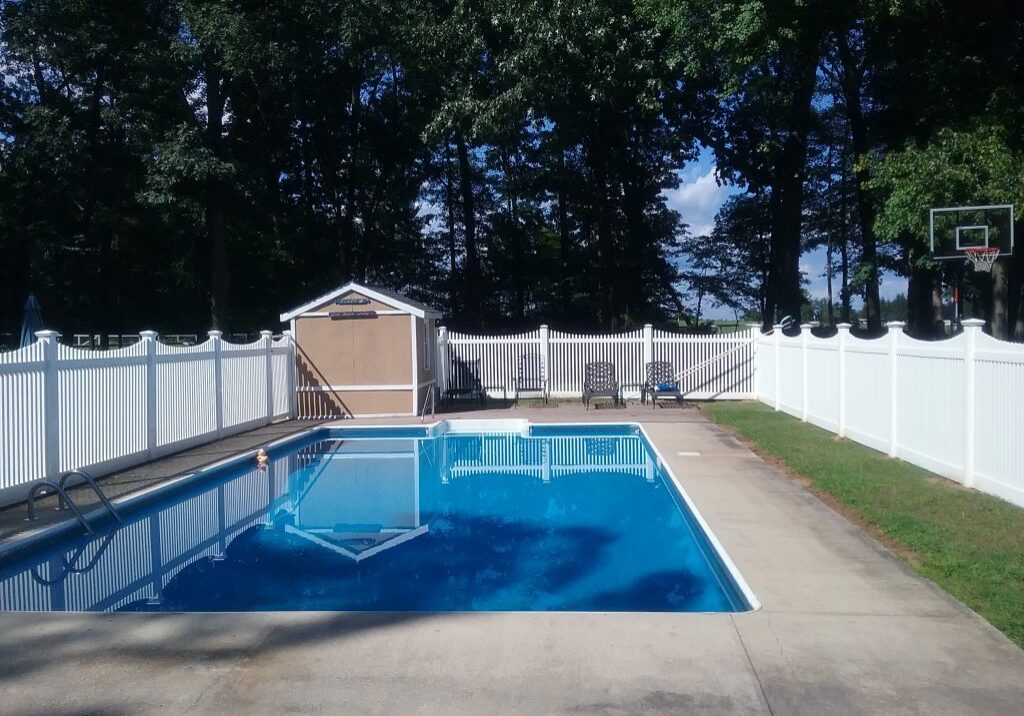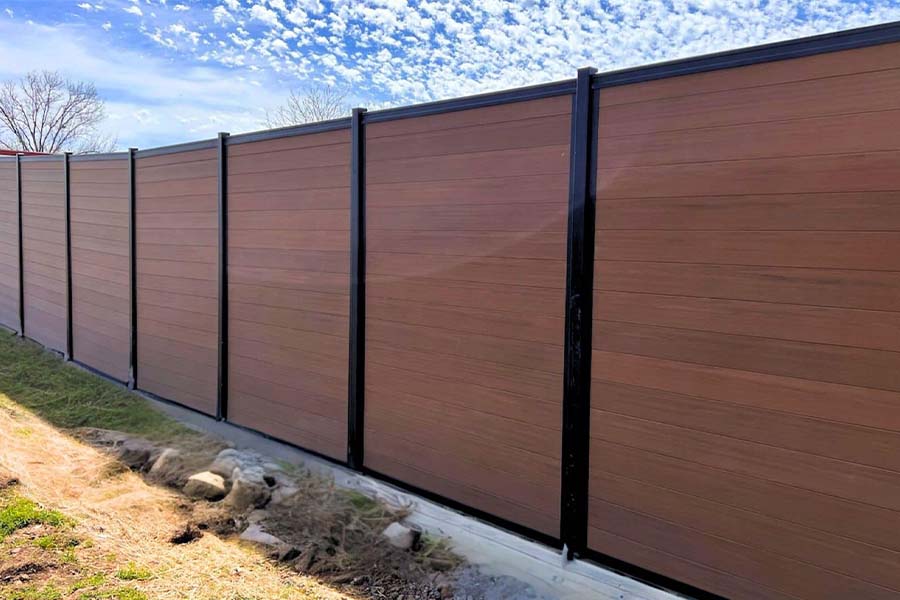All Categories
Featured

As sustainability ends up being an expanding concern for house owners and businesses, the need for green structure products expands to outdoor spaces, consisting of fencings. Traditional secure fencing products such as plastic, timber, and steel can have considerable environmental effects, from logging to chemical therapies and plastic waste. Nonetheless, there are a number of environment-friendly secure fencing alternatives available that not just minimize the carbon impact yet likewise supply durability and visual charm. Let's discover several of one of the most sustainable and prominent secure fencing materials that can aid you go environment-friendly while still improving your property's privacy, safety and security, and design.
- Bamboo Fence. Bamboo is just one of the most sustainable materials on the marketplace, and it is significantly utilized in fencing construction as a result of its fast development and toughness. Unlike hardwood trees, bamboo is a grass that can expand back completely within simply a couple of years, making it very sustainable. It's normally immune to pests and rot, which suggests it doesn't need harsh chemicals or treatments, making it an environmentally friendly option.

Benefits: Bamboo fences are resilient, low-maintenance, and naturally degradable. They are normally resistant to termites and wetness, lowering the requirement for chemical preservatives. In addition, bamboo helps reduce dirt disintegration because of its deep root systems. Factors to consider: Bamboo can be much more costly than some typical timber secure fencing alternatives, and it may not be appropriate for areas with severe chilly or freezing temperature levels, as it can end up being brittle with time. 2. Recycled Products Fencing. Secure fencing made from recycled materials is a great way to advertise sustainability. Numerous makers currently supply fencings made from post-consumer plastic, recycled wood, and even repurposed metal. By selecting secure fencing made from recycled products, you minimize the need for brand-new sources and assist stop waste from winding up in landfills. Numerous composite products, for example, are made from recycled plastic containers, wood scraps, and various other products that would certainly otherwise be thrown out.
Perks: Recycled product fencings aid save all-natural resources, lower air pollution, and lower the environmental impact of the manufacturing procedure. They can additionally supply excellent durability, withstanding decay, mold, and termites. Factors to consider: While recycled material fences are highly durable and environmentally friendly, they may not have the exact same all-natural visual that some property owners seek. However, producers now offer layouts that mimic the appearance of timber or stone. 3. Compound Fence. Composite secure fencing is made from a mix of wood fibers and plastic, often integrating recycled materials. This combination develops a very resilient, low-maintenance fence that does not call for normal paint or staining, making it a lasting option. Compound fences are immune to rot, pests, and weathering, which implies they can last for many years without the need for constant replacements.

Perks: Compound fences are lasting and can hold up against severe weather problems, reducing the requirement for fixings or replacements. Given that composite products commonly include recycled content, they help in reducing plastic waste. In addition, they do not need unsafe chemicals or treatments. Considerations: Composite fences can have a higher upfront price than conventional wood or vinyl, though their durability and lowered maintenance prices often make them an extra economical alternative over time. 4. Living Fences. Living fences, also called hedges, are an environment-friendly and cosmetically pleasing alternative that involves growing thick bushes, trees, or climbing plants along your residential or commercial property line to create a natural obstacle. Popular plants for living fencings consist of boxwood, privet, and holly. These plants can be grown to give personal privacy, windbreaks, and noise reduction while adding to ecological health.
Conveniences: Living fences advertise biodiversity, improve air top quality, and soak up carbon dioxide, making them among one of the most green fencing alternatives. They likewise give an all-natural environment for birds and pests and can lower noise contamination and assist manage temperatures in your yard. Considerations: Living fences require routine maintenance, such as trimming, watering, and in some cases pest control. They likewise take time to establish and might not offer instant privacy contrasted to strong wood or plastic fencings. 5. Cedar and Redwood Secure Fencing. Cedar and redwood are popular natural wood alternatives for fencings. These materials are normally resistant and long lasting to rot, insects, and wetness, which suggests they usually do not call for using unsafe chemical treatments. When sourced from sustainably handled woodlands, cedar and redwood fences can be an ecologically pleasant option that provides both appeal and longevity.
Advantages: These woods are biodegradable, sustainable, and offer excellent toughness and all-natural appeal. Cedar and redwood likewise have a lower ecological influence when collected sensibly, making them an environment-friendly option for numerous house owners. Considerations: While cedar and redwood fences have environmental advantages, they do still call for occasional upkeep and are much more costly than various other wood alternatives. It's important to ensure that the wood is sourced from sustainable forests to optimize its ecological advantages. 6. Stone and Brick Secure Fencing (Redeemed) Stone and brick fencings are low-maintenance and exceptionally durable, and they can be eco-friendly when made from reclaimed products. Redeemed stone and block are usually restored from old structures or construction projects, reducing waste and preserving all-natural sources. These materials offer a timeless look and are highly resistant to weathering, making them a resilient service for fencing.
Advantages: Reclaimed rock and brick are sturdy, cosmetically pleasing, and call for very little upkeep. By repurposing these products, you help in reducing the need for brand-new sources and decrease waste in land fills. Factors to consider: The installation of rock and brick fencings can be labor-intensive and more costly contrasted to various other products, yet their longevity and reduced maintenance demands can make them cost-effective in the long run. Verdict. Environment-friendly fencing options are not only helpful for the atmosphere yet additionally supply resilience, low upkeep, and aesthetic allure. Whether you go with bamboo, recycled products, composite fence, living fencings, or lasting timber like cedar and redwood, there are numerous ways to reduce your environmental footprint while enhancing your residential property's appearance. By selecting these eco-conscious products, you can contribute to a much healthier earth and produce an exterior area that shows your values.
Latest Posts
Reasons Routine Car Maintenance at Montclare Auto Repair Keeps Your Wallet Happy
Published en
1 min read
Find Out Save Big on Car Maintenance with Montclare Auto Repair’s Limited-Time Deals
Published en
1 min read
Uncover Save Big on Car Maintenance with Montclare Auto Repair’s Limited-Time Deals
Published en
1 min read
More
Latest Posts
Reasons Routine Car Maintenance at Montclare Auto Repair Keeps Your Wallet Happy
Published May 27, 25
1 min read
Find Out Save Big on Car Maintenance with Montclare Auto Repair’s Limited-Time Deals
Published May 25, 25
1 min read
Uncover Save Big on Car Maintenance with Montclare Auto Repair’s Limited-Time Deals
Published May 24, 25
1 min read